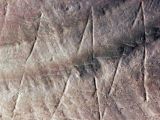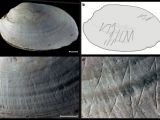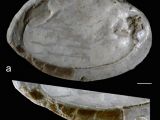Our ancestors didn't spend hours on end caught up in boring business meetings or waiting in line at the bank, but this does not mean that they didn't feel the need to create abstract drawings every once in a while, just to make the time pass faster.
Thus, a paper published in yesterday's issue of the journal Nature announces the discovery of an ancient doodle engraved on a shell unearthed in Indonesia. The drawing, photos of which are available below, is estimated to be about 500,000 years old.
Possibly the oldest abstract marking ever found
Specialists with Leiden University in the Netherlands and fellow researchers explain that the fossilized mussel shell bearing the 500,000-year-old zigzag marking now hailed as the world's oldest doodle was found on the Indonesian island of Java.
The scientists go on to detail that what first drew their attention was the fact that, although an abstract marking, the doodle clearly represented a geometrical pattern deliberately created and not caused by animals or natural processes.
Having carried out a series of tests, the Leiden University researchers and their colleagues found the shell and the engraving to be about 430,000 to 540,000 years old. As mentioned, this makes the zigzag pattern the oldest abstract marking thus far discovered anywhere in the world.
So, who created this abstract pattern on the shell?
Specialists say that, given the doodle's age, chances are that it was the creation of the human ancestor Homo erectus. As detailed in the journal Nature, this species emerged in Africa some 2 million years ago and eventually made it all the way to Indonesia, the island of Java included.
Evidence at hand indicates that Homo erectus went extinct some 140,000 years ago. The majority of paleoanthropologists agree that Home erectus is the direct ancestor of humans and Neanderthals.
What's interesting is that, until the discovery of this shell and the zigzag pattern on it, the oldest artworks in the world were considered to be the ones created by anatomically modern humans, i.e. Homo sapiens, and Neanderthals.
Thus, several Homo sapiens paintings discovered in Europe and Indonesia are estimated to be about 40,000 years old, and a hashtag-like engraving found in a cave in Gibraltar is said to be a 39,000-year-old example of Neanderthal art.
As explained by the Leiden University researchers and their colleagues, the discovery of this 500,000-year-old Home erectus doodle is likely to forever change the way we view this extinct species. “This is a truly spectacular find and has the potential to overturn the way we look at early Homo,” said archaeologist Nick Barton.

 14 DAY TRIAL //
14 DAY TRIAL // 



